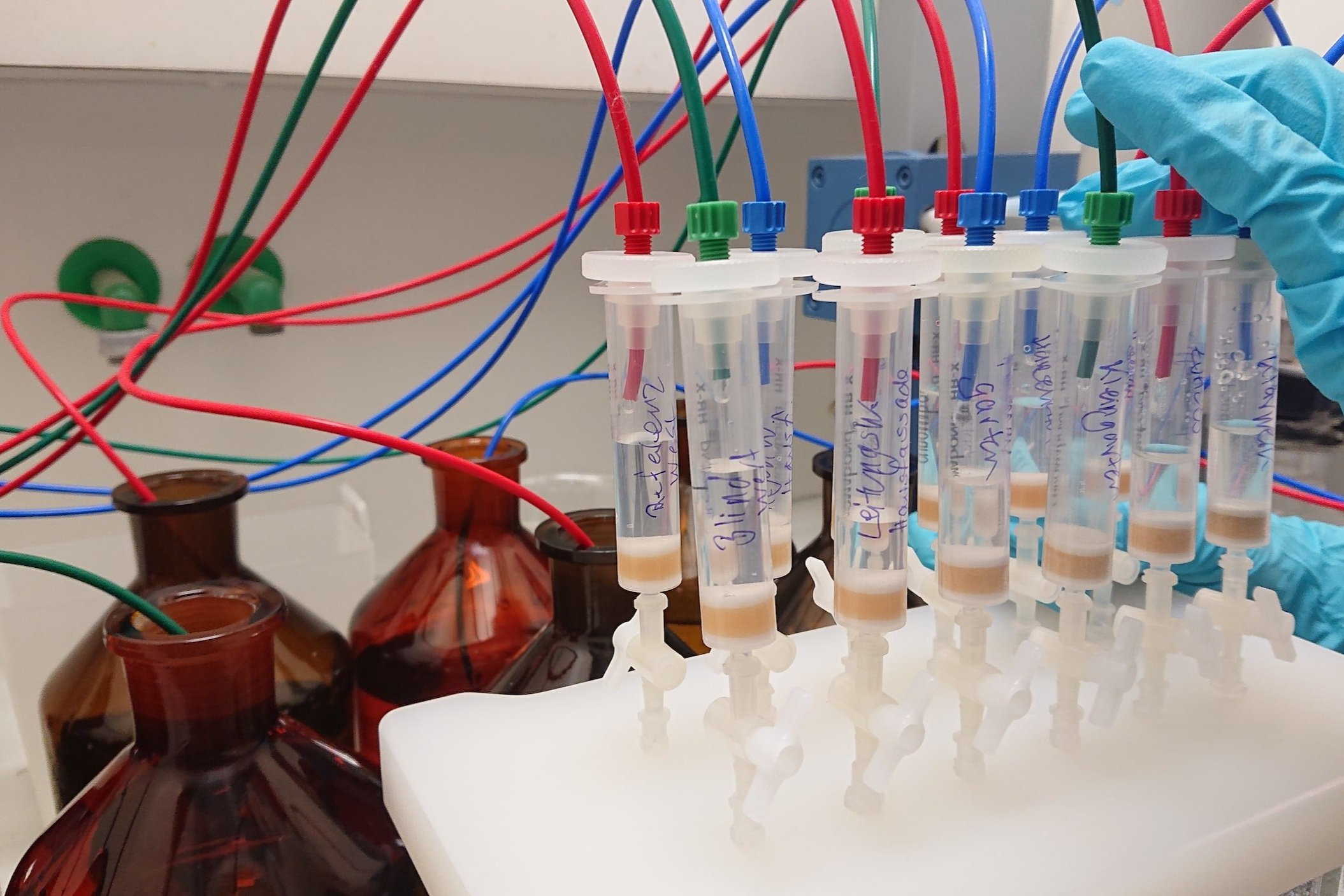
Analytical Chemistry
Using high resolution mass spectrometery (HRMS) and high performance liquid chromatography (HPLC) to unravel the molecular composition of aquatic dissolved organic matter.
Publications
DOM Standard: TRM-0522
In Felgate et al. (2023) we characterise a new reference material for marine dissolved organic matter, which we have produced for use in high resolution analytical chemistry applications (i.e. high resolution mass spectrometry (HRMS) , nuclear magnetic resonance (NMR), and environmental metabolomics (eMeta) approaches). This material is now available to the wider research community for day-to-day use.
Note: this paper was first published as a pre-print in 2022.
Ongoing Work
HPLC-MS Freezer Study
Frozen storage of DOM samples is common, but it is unclear what effect this has on the data produced. This comparative study looks at key DOM metrics in frozen and non-frozen samples, in order to determine the most appropriate way to handle storage and transport in future. This work is in collaboration with researchers from the University of Cambridge.
Method Development
Mass Spectrometry already provides a wealth of data, but is it possible to get even more? We are working to combine various in-line components (including charged aerosol detectors and UV diode arrays) to maximise the information we can gather on environmental samples, without added experimental effort.
Oxygen Optodes
I use optode technology to investigate the factors which control the bio- and photo-degradation of terrigenous organic matter in aquatic systems. As well as traditional, lab-based incubation experiments, I also deploy bespoke ambient incubation platforms and lab-based incubators capable of delivering highly controlled temperature and light regimes



